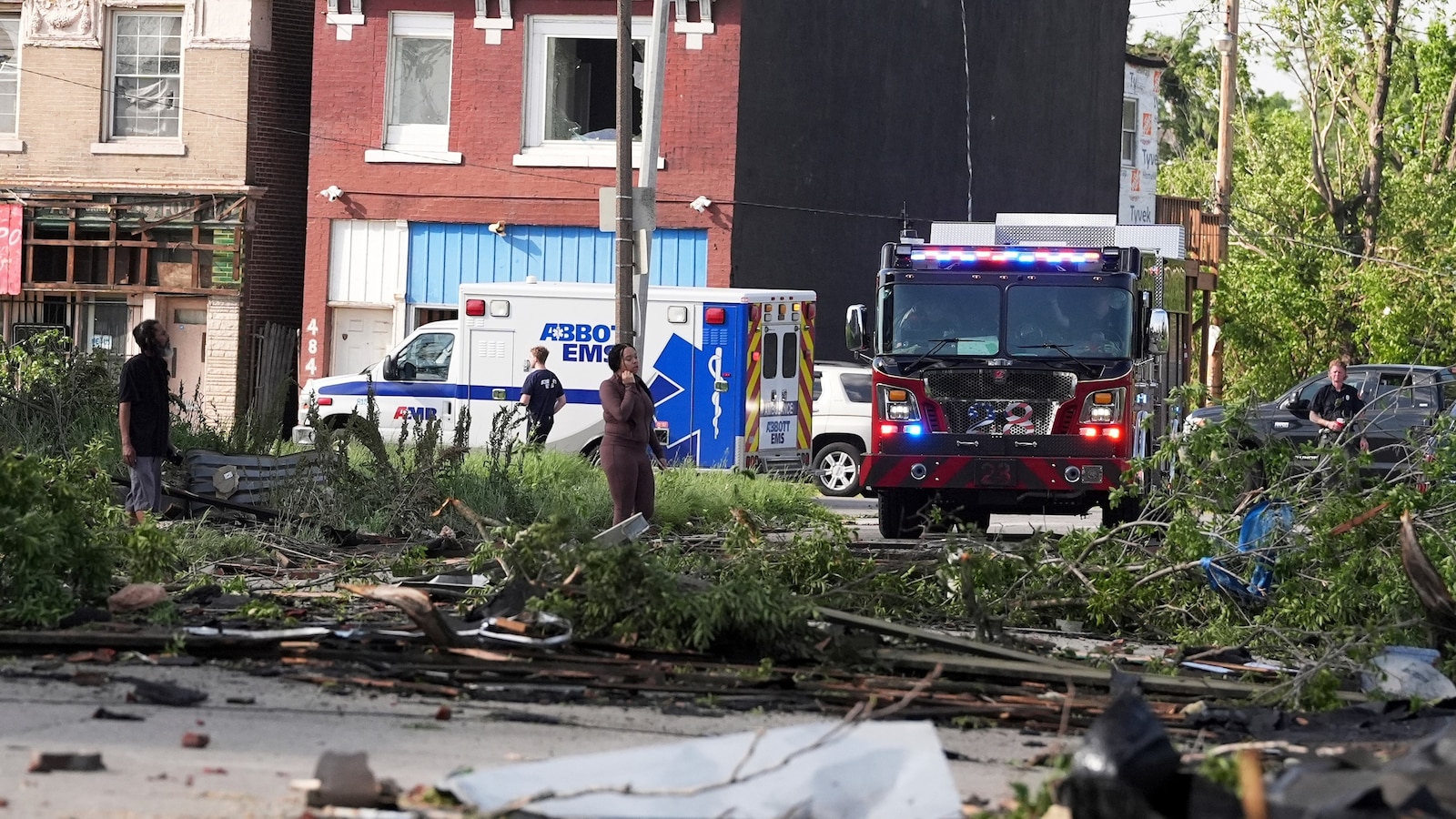Devastating Storms Claim Lives and Wreak Havoc Across America’s Heartland
A series of violent storms tore through America’s Heartland this week, leaving at least 15 dead, dozens injured, and a trail of destruction across Texas, Oklahoma, Arkansas, and Missouri. The severe weather, which struck between May 21-24, 2024, unleashed tornadoes, baseball-sized hail, and flash floods that flattened homes, uprooted trees, and left thousands without power. Meteorologists attribute the extreme conditions to an unstable atmospheric collision of warm, moist air from the Gulf and a strong cold front.
Communities in Crisis: The Immediate Aftermath
Rescue teams worked through the night in hardest-hit Cooke County, Texas, where a 3/4-mile-wide tornado killed seven people, including two children, and destroyed over 200 structures. Emergency responders used thermal imaging drones to locate survivors trapped under debris. “This is the worst damage I’ve seen in my 20 years of service,” said Cooke County Fire Marshal Ray Fletcher. “Entire neighborhoods look like they’ve been put through a woodchipper.”
The storms caused cascading emergencies:
- Power outages affecting 350,000+ customers across four states
- Interstate 35 shut down for 12 hours due to overturned trucks and debris
- Water treatment plants compromised in three Arkansas towns
- Agricultural losses estimated at $500 million from flattened crops and livestock fatalities
Climate Connections: Why These Storms Were Exceptional
The Storm Prediction Center recorded 78 tornado reports during the outbreak—nearly triple the 30-year average for late May. Dr. Alicia Reinhart, a severe weather researcher at the University of Oklahoma, notes this fits a troubling pattern: “Since 2000, we’ve seen a 35% increase in high-risk convective outlook days in the Southern Plains during spring. Warmer Gulf waters are essentially loading the dice for more extreme rainfall and stronger vortices.”
Key climate indicators from this event:
- CAPE (Convective Available Potential Energy) values exceeded 4,500 J/kg—enough to fuel EF4 tornadoes
- 72°F dew points in Oklahoma broke May moisture records
- Storm cells traveled 300+ miles at 55 mph, limiting warning times
Heartland Resilience: Stories of Survival and Solidarity
In Rogers, Arkansas, 62-year-old Marvin Greer survived by sheltering in his bathtub as his home collapsed around him. “The noise was like a thousand freight trains,” he recounted. “When I crawled out, there was nothing left but the plumbing pipes sticking up from the foundation.”
Community responses have been swift:
- Chainsaw-wielding volunteers cleared 80% of blocked roads within 48 hours
- Local restaurants converted to mass feeding stations
- Facebook community groups matched 1,200 displaced families with temporary housing
However, challenges remain. FEMA teams report that 40% of damaged properties lacked tornado insurance. “Many residents thought their homeowner policies covered this,” said FEMA coordinator Leticia Morales. “Now they’re facing total losses with limited recovery options.”
Recovery Efforts and the Long Road Ahead
President Biden approved major disaster declarations for 27 counties, unlocking federal rebuilding funds. The American Red Cross has established 18 shelters, while utility companies deployed 5,000+ crews to restore power. Still, officials warn that some rural areas may wait weeks for electricity.
Critical infrastructure priorities:
- Emergency repairs to 12 compromised cell towers
- Debris removal from 150 miles of waterways to prevent flooding
- Structural assessments for 500+ public buildings
Agricultural economists predict ripple effects from the destruction of 800,000 acres of wheat nearing harvest. “This could raise global wheat prices 3-5% by July,” cautioned USDA analyst Connor Briggs.
Preparing for the New Normal of Extreme Weather
As climate models predict more frequent high-intensity storms, emergency managers are advocating for:
- Community safe room construction programs
- Mandatory storm shelter requirements for mobile home parks
- Enhanced warning systems with multilingual alerts
“We can’t stop these storms, but we can stop the death toll,” said National Weather Service Director Ken Graham, noting that 60% of fatalities occurred in homes without basements. “A $5,000 storm shelter is cheaper than a funeral.”
For those wishing to help, the Heartland Disaster Relief Fund is accepting donations to provide direct assistance to affected families. Meanwhile, survivors brace for more severe weather predicted next week—a reminder that in this era of climate volatility, recovery is often interrupted by the next disaster.
See more Your Daily Weather



